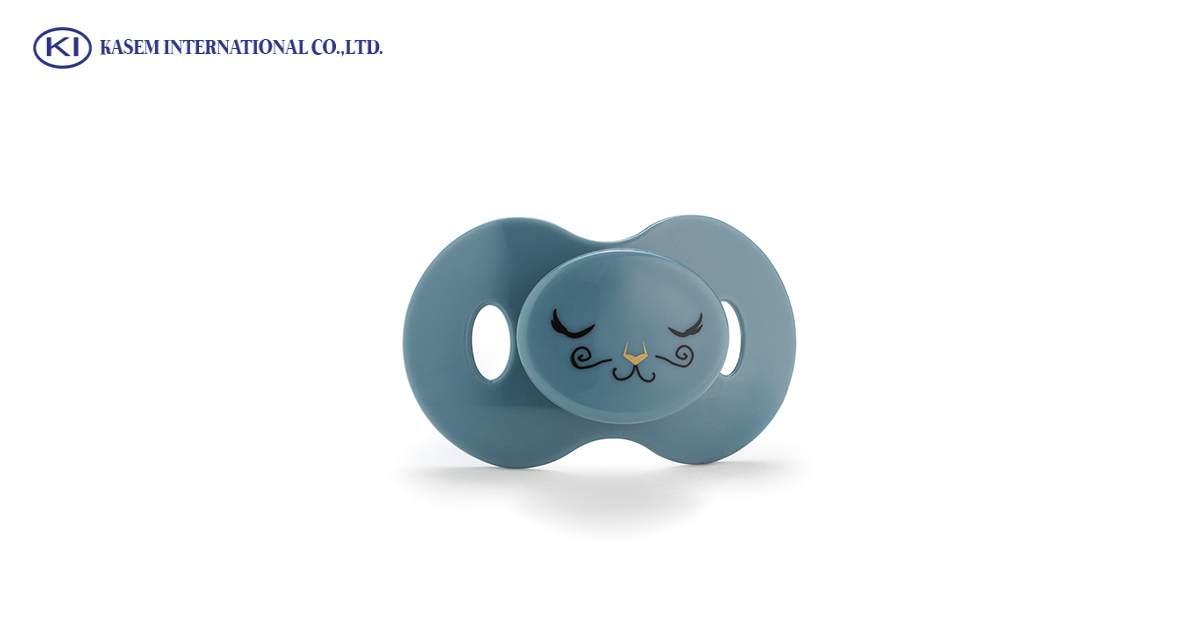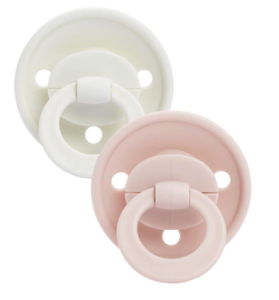

Choosing the Best Pacifier for Your Baby’s Oral Health
Pacifiers are a common sight in nurseries worldwide. They offer a sense of comfort and security to babies, and for many parents, they can be a lifesaver during fussy moments. But with so many varieties available, choosing the best pacifier for your baby can be overwhelming.
This blog post from Kasem International, a trusted provider of high-quality baby products, will guide you through the selection process, ensuring you choose a pacifier that promotes both your baby’s comfort and oral health.
Best Pacifier for Your Baby: Selection Tips
Prioritize Safety: Safety is paramount. Look for pacifiers that meet or exceed safety standards set by organizations like the American Academy of Pediatrics (AAP). The pacifier should be made from BPA-free, non-toxic materials and have a one-piece design or well-secured seams to prevent choking hazards. The shield should be at least 1.5 inches in diameter to avoid accidental swallowing.
Embrace Orthodontic Design: Not all pacifiers are created equal. Traditional round pacifiers can put pressure on developing teeth and jaw alignment, potentially leading to future dental issues. Opt for orthodontic pacifiers. These feature a symmetrical, flattened nipple that mimics the shape of a mother’s nipple during breastfeeding, promoting natural palate development and reducing the risk of misaligned teeth.

Material Matters: Pacifiers are typically made from silicone or latex. Silicone pacifiers are generally more durable, heat-resistant, and easier to clean, making them a popular choice. Latex pacifiers, on the other hand, may be softer and more natural-feeling for some babies. Consider your baby’s preferences and prioritize whichever material is BPA-free and safe.
Size it Up: Babies come in all shapes and sizes, and so do their mouths! Choosing the right size pacifier ensures comfort and safety. Newborns typically need smaller pacifiers to prevent them from gagging. As your baby grows, you’ll need to transition to larger sizes to accommodate their developing mouth.
Comfort is Key: Ultimately, the best pacifier for your baby is the one they find most comforting. Observe your baby’s sucking habits and preferences. Some babies prefer symmetrical nipples, while others may favor cherry-shaped ones. Experiment with different shapes and materials to find the pacifier your baby readily accepts and keeps in their mouth.
Pacifier Safety Guidelines:
Never attach strings or ribbons: These pose a strangulation hazard.
Inspect the pacifier regularly: Discard any pacifiers with cracks, tears, or sticky areas.
Clean and sterilize: Especially for newborns, regularly clean and sterilize pacifiers according to the manufacturer’s instructions. Boiling or using a steam sterilizer are common methods.
Avoid dipping in sweeteners: This can promote tooth decay and expose your baby to unhealthy sugar habits.
Don’t force it: If your baby consistently rejects a pacifier, don’t force it. They may not be interested in using one.
Oral Hygiene and Pacifier Choice:
While pacifiers can be a valuable tool for soothing your baby, it’s important to consider their potential impact on oral hygiene. Prolonged pacifier use (beyond the recommended age) can contribute to:
Misaligned teeth: Orthodontic pacifiers can help minimize this risk, but early weaning (around age 3) is still recommended for optimal oral development.
Ear infections: Studies suggest a possible link between extended pacifier use and increased ear infections in some babies.
Nipple Shape and Baby Comfort:
As mentioned earlier, nipple shape plays a crucial role in both comfort and oral health. Here’s a breakdown of common nipple shapes:
Cherry-shaped: These mimic a mother’s nipple during breastfeeding and can be comforting for some babies. However, they may put more pressure on the roof of the mouth.
Symmetrical/Anatomic: These flat, symmetrical nipples are designed to minimize pressure on the palate and promote natural oral development.
Dented/Curved: These variations can offer a more natural feel for some babies, but the impact on oral health may vary depending on the specific design.
Materials for Baby Pacifiers:
Silicone: The most popular pacifier material, silicone is durable, heat-resistant, and easy to clean. It’s also generally hypoallergenic.
Latex: Softer and more flexible than silicone, latex might feel more natural for some babies. However, latex can deteriorate faster and may not be suitable for babies with latex allergies.
Read More – Top 5 Sustainable Materials for Baby Tableware: Choosing Goodness at Mealtime
Pacifier Age Recommendations:
The AAP recommends weaning your baby off pacifiers by around age 3. This helps to minimize the potential for dental issues and allows for normal oral development. Here’s a general guideline to consider:
Newborns (0-3 months): During this stage, focus on establishing breastfeeding or bottle-feeding routines before introducing a pacifier. If you do choose to use one, prioritize small, orthodontic pacifiers made from safe materials like silicone.
Infants (4-12 months): As your baby’s sucking reflex strengthens, they may find comfort in a pacifier. Continue using orthodontic pacifiers and ensure proper cleaning and sterilization.
Toddlers (1-3 years): This is the ideal timeframe to begin weaning your child off pacifiers. Introduce the concept gradually, offering comfort and reassurance during the transition. Consider offering cuddles or stuffed animals as substitutes for the pacifier.
Pacifier Cleaning Methods:
Boiling: This is a common method for sterilizing pacifiers. Follow the manufacturer’s instructions for boiling duration and allow the pacifier to cool completely before giving it to your baby.
Steam Sterilization: Steam sterilizers are a convenient option for cleaning and sterilizing pacifiers. Fill the sterilizer with water according to the instructions and place the pacifiers in the designated basket. Run the sterilization cycle and allow the pacifier to cool completely before use.
Soap and Water: For quick cleaning between sterilizations, wash the pacifier with warm, soapy water. Rinse thoroughly and allow it to air dry completely before offering it to your baby.
Pacifier Impact on Teeth Development:
While orthodontic pacifiers can help minimize risks, prolonged pacifier use can affect teeth development. Here’s what to watch for:
Open Bite: This occurs when the upper and lower front teeth don’t meet properly when biting down. Early weaning can help prevent this.
Crossbite: This happens when the upper teeth overlap the lower teeth instead of meeting edge to edge.
Speech Impediments: In severe cases, prolonged pacifier use can affect tongue placement and lead to speech difficulties.
Conclusion:
Choosing the right pacifier for your baby can promote both comfort and oral health. By prioritizing safety, opting for orthodontic designs, and following proper cleaning and weaning practices, you can ensure your little one enjoys the soothing benefits of a pacifier while minimizing potential downsides. Remember, consult your pediatrician if you have any concerns about your baby’s pacifier use or oral development.
Kasem International is committed to providing parents with high-quality baby products, including a wide selection of safe and effective pacifiers. Explore our range and find the perfect pacifier to support your baby’s comfort and well-being!

 March 13, 2024
March 13, 2024